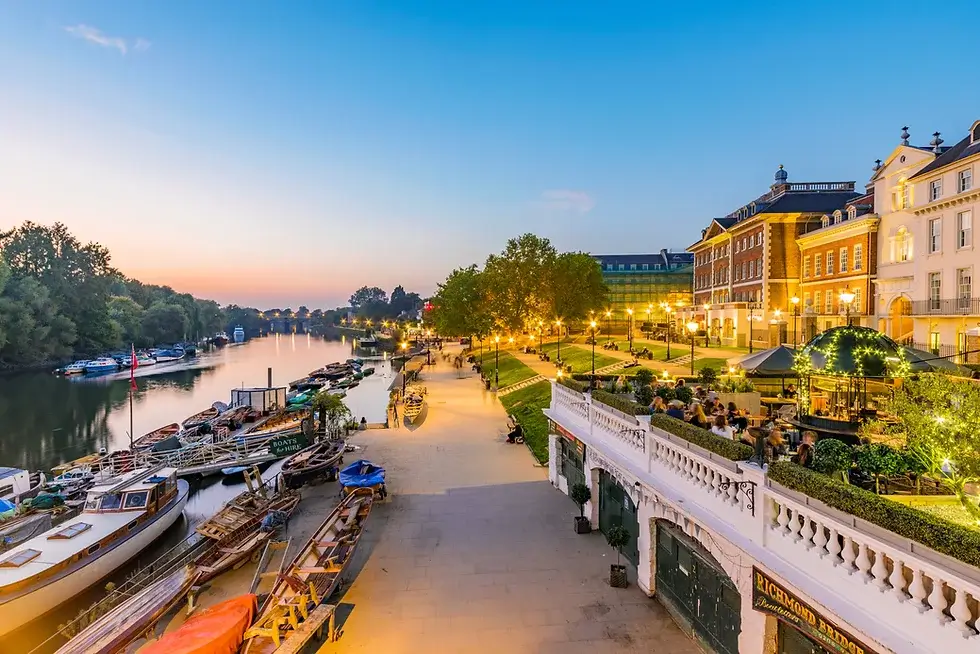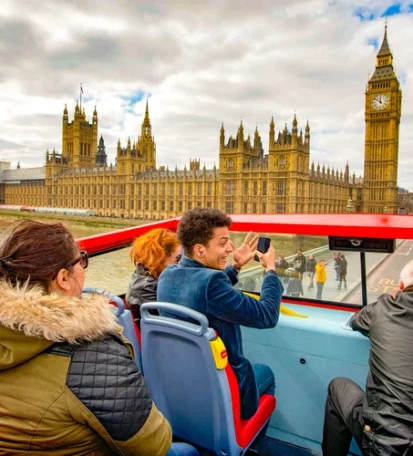Tips
Top 7 London Safest Areas in 2024

As one of the world’s most vibrant and diverse cities, London’s reputation for safety is often a concern for residents and visitors alike. Safety is not uniform across the city, and understanding London safest areas being one of the top business travel destinations in the UK can provide peace of mind.
The layout of London is complex, with each borough boasting its unique characteristics and levels of safety. Areas with lower crime rates, community initiatives, and effective safety programs tend to be more sought after for living and visiting.
The safety of neighbourhoods in London is frequently assessed by crime statistics, which track the frequency of incidents across various postcodes. This data is utilised to create rankings that inform the public about the safest places to live and explore.
Comparative analysis with other major cities also highlights London’s safety initiatives, offering insight into the effectiveness of the city’s approach to maintaining secure environments. Additionally, familiarising oneself with safety tips can enhance your overall experience in the capital.
Key Takeaways
- London’s safety varies by borough, with each area having its safety profile.
- Comprehensive crime data and rankings guide the safest areas.
- Comparing London to other cities and following safety advice can enhance your security.
Understanding London’s Layout
London is a sprawling metropolis, divided into areas that offer various experiences and levels of safety. Understanding its layout is crucial to navigating and residing in the city effectively.
Central London Safety
In Central London, the perception of safety often correlates with the bustling nature of the area. Here, you are in the heart of the city, encompassing key tourist destinations and business hubs.
Generally, these areas are well-policed and under constant surveillance. However, remain vigilant during off-peak hours when streets can become less populated.
Zone 1-2 Insights
The areas covering Transport for London’s Zones 1 and 2 are a mix of residential, commercial, and touristic spots. Your safety in these zones is reinforced by their status as well-trafficked. It’s also a well-lit area with an active community presence.
It is in these zones that you’ll find neighbourhoods with various safety records, so it’s wise to review up-to-date crime data and local insights when evaluating them.
Top Safest Boroughs in London
When considering a place to live or visit in London, safety is often a top priority. The following boroughs boast some of the lowest crime rates in the city, making them attractive options for residents and tourists alike.
1. Richmond Upon Thames

Richmond Upon Thames is renowned for being one of the most tranquil and safest boroughs in London. The crime rates here are significantly lower than the London average, with its leafy streets, picturesque parks, and top-rated schools, Richmond offers a safe and idyllic environment for residents of all ages. provides peace of mind for those who value security and a serene environment.
2. Sutton
Sutton consistently ranks as a haven with one of the lowest crime rates across London boroughs. Safety initiatives and community engagement in Sutton have been successful in maintaining a secure atmosphere for all who live and work in the area. Also, this residential borough offers a range of housing options, from traditional terraced houses to modern developments, catering to individuals and families alike. With its well-regarded schools, scenic parks, and vibrant town centre, Sutton is a safe and welcoming community for residents of all ages.
3. Bexley
In Bexley, you’ll find that safety isn’t a concern thanks to its reputation as one of the safest boroughs, with crime rates well below the London average. Its suburban feel and family-friendly neighbourhoods make Bexley a top choice for those seeking security and stability. Whether you’re enjoying a stroll along the River Thames or exploring the historic attractions of Bexley Village, you’ll find a sense of security and belonging in this welcoming area.
4. Harrow
Situated in northwest London, Harrow is renowned for its diverse community and strong sense of belonging. This culturally rich area boasts a range of housing options, from Victorian terraces to contemporary apartments, catering to residents from all walks of life. With its well-maintained parks, reputable schools, and active neighbourhood watch schemes, Harrow offers peace of mind to its inhabitants.
London Safest Neighbourhoods
When considering your move to London, safety is likely at the forefront of your concerns. The capital boasts several areas renowned for its low crime rates and community-oriented atmosphere.
5. St. John’s Wood
St. John’s Wood is recognised for its beautiful tree-lined streets and the prestigious Lords Cricket Ground. With its serene ambience, it stands out as a top choice for safety-conscious individuals.
St John’s Wood is a relatively safe area, but it is still important to consider the safety and security of the road you choose. Look for roads that are well-lit, with good visibility and minimal through traffic.
6. Hampstead
Hampstead offers not only the idyllic verdancy of its famous heath but also a strong sense of security. Its village-like feel contributes to a close-knit community where safety is a collective priority.
7. Greenwich
Greenwich is celebrated for its rich maritime history and as the home of the Prime Meridian. It’s a neighbourhood where a strong sense of local heritage and community watchfulness underscores safety.
Crime Statistics and Safety Rankings
In determining the safest areas in London, you’ll find that both official police reports and independent surveys play a crucial role. The safety of each borough is more nuanced than raw numbers, as it considers the types of crimes and the likelihood of being affected by them.
1. Metropolitan Police Reports
The Metropolitan Police Service provides detailed records and comparisons regarding crime rates in London. You can assess the safety of your local area against similar areas based on crime data over twelve months. Remember, the position of your area relative to the average, indicated by red and green lines, holds more significance than its rank.
2. Independent Safety Surveys
Surveys and statistics provided by independent bodies offer additional insights into London’s safety. The London borough of Bromley stands out with a crime rate that’s 28% lower than London’s average. Moreover, other helpful resources aggregate data across the metropolis, which can outline trends and provide a clearer picture of crime relative to the overall population, such as the reported overall crime rate in London being 32% worse than the national average.
Community Initiatives and Safety Programs
Your safety is taken seriously in London, and the community initiatives reflect this commitment. From Neighbourhood Watch Schemes to rigorous community policing efforts, these programs are pivotal in maintaining London as one of the safest capital cities.
Neighbourhood Watch Schemes
In the fabric of London’s security, Neighbourhood Watch Schemes stand out as a beacon of communal vigilance. These schemes are collaborations between residents in a neighbourhood to prevent crime. As a member, you’re encouraged to report suspicious activities and partake in safety awareness campaigns. Information is disseminated through various channels, including local meetings and social media groups. Participation in these schemes has been linked to a tangible reduction in crime rates in the participating areas.
Community Policing Efforts
Community Policing is not just a concept; it’s an active part of everyday life in London’s safest areas. Police officers are assigned to specific communities, allowing them to build trust and a deeper understanding of the areas they serve. This approach has enabled the police to work more effectively with residents and local businesses to deter crime and quickly respond to issues. For example, Hillingdon’s approach to safety demonstrates the role of community engagement in creating a secure living environment.
Comparative Safety: London vs Other Major Cities
When assessing your safety in London compared to other major cities in the UK, it’s crucial to consider crime rates and police presence. London has a robust police force with three distinct bodies dedicated to keeping the city secure. You’ll find that, in comparison, smaller cities may have fewer police resources.
- Police Forces: London operates with the Metropolitan Police, City of London Police, and British Transport Police.
Regarding crime rates, London’s crime statistics need to be considered within the city’s vast size and diverse population. When compared with other major UK cities, London’s crime rate isn’t significantly out of step.
- Crime Rate: Adjusted for population, London’s crime figures align with other cities.
You should also be aware that London has been named one of the safest cities to travel to internationally in 2024, indicating that safety measures are effective enough to garner global recognition.
- Global Ranking: Acknowledged on an international scale for safety.
The city’s vast surveillance system plays a beneficial role. With CCTV widely used, authorities can respond swiftly to incidents, adding layer of security.
- Surveillance: Extensive CCTV coverage aiding in crime prevention.
Your experience in London should be similar in safety to cities like Manchester or Glasgow when considering the above factors. Remember that while no city is entirely crime-free, measures in place make London a comparably safe destination.
Tips for Staying Safe in London
While London is known for its relative safety, taking proactive measures can further ensure your security during your stay.
Personal Safety Practices
- Stay Aware: Always be conscious of your surroundings, especially in crowded places. Avoid displaying valuables such as jewellery or electronic devices that may attract unwanted attention.
- Travel Smart: Use licensed taxis or reputable public transport. Night buses and the Tube are typically safe, but consider sitting close to other passengers or the driver if travelling alone at night.
Emergency Services Information
- Emergency Numbers: For urgent assistance, dial 999 to reach the police, fire brigade, or ambulance. For non-urgent incidents, call 101 to report crimes that don’t need an immediate response.
- Stay Informed: Familiarise yourself with the nearest police station and hospital locations. Apps like Citymapper can help navigate to these services when necessary.
Remember, a little caution goes a long way in maintaining your safety.




